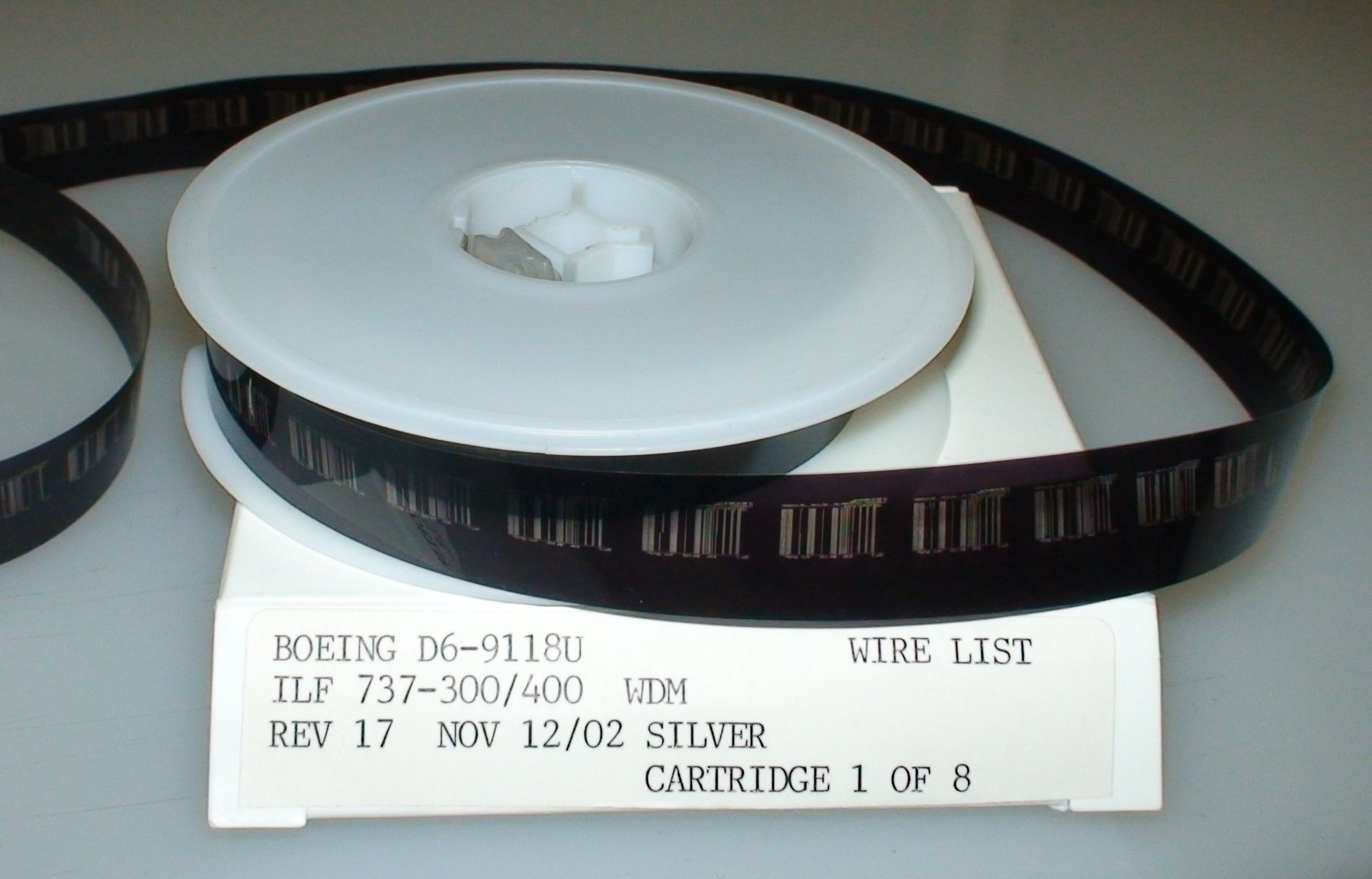What is microfilm?

Microfilm is basically 35mm or 16 mm camera film, but optimized for its particular purpose. For many decades it was the standard medium for storing large archives of textual matter, and libraries used microfilm to manage space-consuming backfiles of newspapers, research journals, and magazines.
Wikipedia's list of online newspaper archives
Wikipedia's list of online newspaper archives links to several hundred titles around the world, and it includes both free and pay wall access newspapers.
Newspapers on microfilm
Most newspapers are filed alphabetically by title in the green label microfilm cabinets, though a few were assigned call numbers and shelved on the far west wall of the 1st Floor. Ask at the Service Desk on the 1st Floor if you need help finding the microfilm or using the microfilm reader/scanner machines.
Atlanta Constitution, 1868-1900.
Barron’s, 1944-2005.
Chicago Defender, 1921-2013.
Commercial and Financial Chronicle, 1915-1987.
Iowa Frontier Newspapers. This miscellaneous collection spans the years 1838-1859.
Jewish Press, 1920-1995 [filed at call number BM1 .J55]
Lincoln Journal, 1977-1991.
Lincoln Star, 1902-1991.
Morning Chronicle (London), 1801-1870.
National Police Gazette, V.1 (1845)-V.57 (1891); V.59 (1891)-V.67 (1896); V.69 (1896)-V.89 (1906) [filed at call number HV6201 .N2]. Issues, with some gaps, also available in the American Periodicals Series database.
Nebraska State Journal, 1867-1951.
New Orleans Times-Picayune, 1899-1921 [filed at call number F366 .D34.]
New York Amsterdam News, 1922-2013.
Observer (London), 1791-1917.
Omaha Bee-News, 1872-1937 on microfilm. The Omaha Daily Bee extending from July 1874 into April 1916 has been scanned by the Center for Digital Research in the Humanities at the University of Nebraska-Lincoln and made freely available online at the Library of Congress' Chronicling America website.
Omaha Herald, 1867-1889. Scanned copies extending from 1866-1879 are available via the library's Newsbank account.
Omaha Monitor, 1915-1929.
Omaha Republican, 1865-1890 on microfilm. Scanned copies extending from 1866-1880 are available via the library's Newsbank account.
Omaha Star, 1938-To Date on microfilm. The Omaha Star historical file (1938-2011) and the current file (2011- , updated monthly) are available in the Access World News database.
Omaha World-Herald, 1889-2018 on microfilm. The Omaha World Herald scanned historical file (1885-1983) and the current text file (1983- , updated daily) are both available in the Access World News database. Microfilm production ended after 2018 and was replaced by a daily image file, available in Access World News beginning in September 2018.
Pall Mall Gazette, 1866-1923.
Pravda, 1979-1993.
Southern Civil War Era Newspapers. This is a collection of newspapers published in cities across the Confederate States during the Civil War. Search the keyword "Southern Civil War Era Newspapers" in the catalog to see a complete list of the newspapers.
Unionist (Omaha), 1930-1979.
Village Voice, 1957-2002.
Wall Street Transcript, 1972-1992.
Washington Post, 1970-1976.
Current Nebraska newspapers in Access World News
Altogether, Criss Library has microfilm for about forty Nebraska newspapers, many of which published for just a few years. For example, the Omaha Arrow published only in 1854, and The Conservative (Nebraska City) published only from 1898-1902. In some cases the microfilm captures the only surviving issues of these short-lived publications, and you will discover notable gaps in the dates included.
Newsbank, the company which compiles and distributes the Access World News database, has in recent years added feeds from many smaller local and regional newspapers. You may click the link above to retrieve an Excel spreadsheet which lists the 38 Nebraska sources available in Access World News as of March 2015. Note that these include not only newspaper articles, but in some cases blogs and articles posted to the newspaper websites.
-
Access World News This link opens in a new window
Search over 6,000 news sources across the United States and over 2,500 from around the world. Time coverage extends back 35 years for some sources, and the database is updated every day. Archival files Include the Omaha World Herald back to 1885.
-
Nebraska News Sources in Access World NewsDownloadable spreadsheet of Nebraska newspapers in Access World News.
Broadcasting/Newsreels
-
Television News Archive(1968-) indexes the collection of network television news programs. Abstracts are searchable by keyword in order to locate information and/or request videotape loans.
-
Internet ArchiveIncludes films, radio audio clips, news clips, educational films, advertisements, industry films, etc. Set Search from All Media Types to Video: Audio: News and Public Affairs.
-
The Associated PressThe Associated Press and British Movietone have put a huge collection of digitized newsreels (1895- ) into YouTube.
-
American Archive of Public BroadcastingOffers American public radio and television content dating back to the 1950s.
-
March of TimeTime, Inc.'s newsreel series.
Partially Available Online
This Collection contains records, some of which are available online.
2,893 Items (with a total of 2,900 digital objects) from this Collection are currently online and ready to view. -
NBCUniversal ArchivesThe oldest television news collection in the US dating back to the first NBC nightly news program in 1948.
-
NBC LearnA video library of more than 21,000 resources including NBC News broadcasts, archival footage, and original educational series.
-
Pacifica Radio ArchivesA collection of broadcast archives from Pacifica radio that includes documentaries, performances, discussions, debates, drama, poetry readings, commentaries and radio arts.
